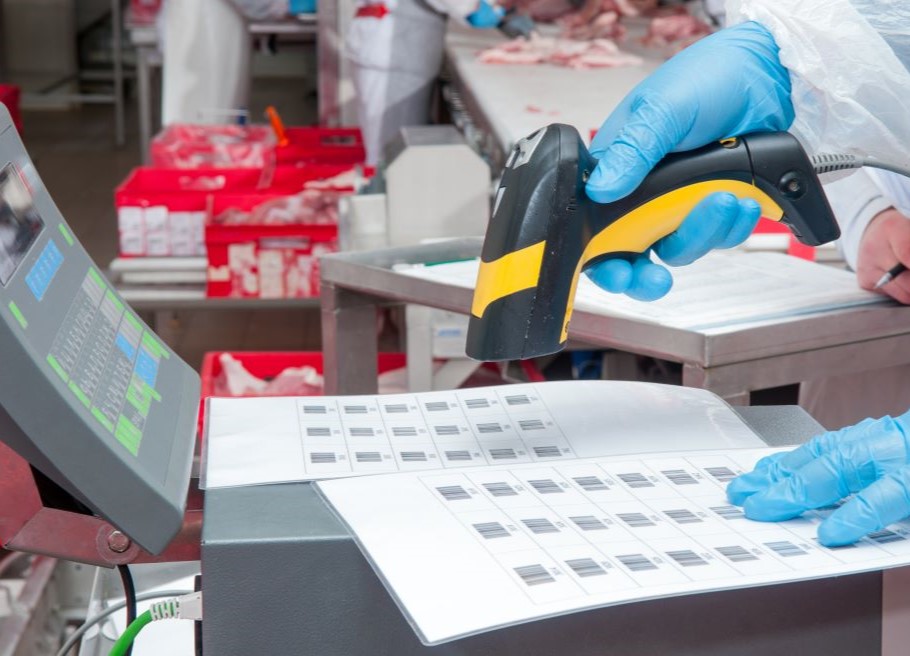How Cybersecurity Can Play a Critical Role in Combatting Food Fraud
By Kristin Demoranville
As digital transformations reshape the food industry’s operations, cybersecurity has become a foundational element for ensuring overall food safety. From farm to table, every supply chain segment is susceptible to various digital threats that can compromise food quality, operational safety, and consumer trust.
This article explores how cybersecurity integrates with multiple facets of the food industry to promote safety and combat food fraud.
Digital Food Fraud: A Very Modern Threat
Digital food fraud involves using digital tools and platforms to perpetrate fraud within the food supply chain. Recent incidents illustrate the pressing challenges posed by food fraud. For example, in 2023, a significant adulteration issue was exposed when a study by the University of California, Davis, found that many commercially available avocado oils in the U.S. and Canada were either rancid or mixed with cheaper oils, misleading consumers about product quality and violating trust. Similarly, the European Union’s “From the Hives” operation revealed widespread honey adulteration.
By leveraging these cybersecurity technologies and strategies, the food industry can more effectively safeguard against the diverse threats posed by digital food fraud.
Enhanced cybersecurity measures can play a crucial role in mitigating these risks:
- False Labeling: A product’s origin, quality, or contents are often misrepresented online. Implementing digital certification and traceability systems that utilize blockchain technology can verify and validate product claims transparently and immutably.
- Counterfeit Products: Cybersecurity can combat the sale of counterfeit products on online platforms by employing advanced image recognition and machine learning algorithms. These technologies can detect product image and description anomalies and alert consumers to potential fraud.
- Tampering with Digital Records: Cybersecurity strategies include using tamper-evident digital ledger technologies to prevent the alteration of digital records that mask the true source or quality of food products. Blockchain can be particularly effective here, providing a secure and transparent way to maintain critical data integrity.
- Online Sale of Expired or Spoiled Goods: Cybersecurity tools can enhance the monitoring of product conditions through devices that track and report the real-time status of perishable goods. Coupled with AI analytics, this data can be continuously analyzed to ensure compliance with safety standards.
- Phishing and Scams: Strengthening defenses against phishing and other scams involves deploying sophisticated cybersecurity software, including anti-phishing toolkits, regular security training for employees and consumers, and robust verification processes for websites and digital advertisements.
By leveraging these cybersecurity technologies and strategies, the food industry can more effectively safeguard against the diverse threats posed by digital food fraud, ensuring the integrity and safety of the food supply.
Cybersecurity Measures: More Than Just Data Protection
The role of cybersecurity in the food industry extends beyond protecting data; it safeguards the food supply itself. Innovations such as blockchain, Internet of Things (IoT) devices, and AI-driven analytics enhance the security and transparency of food supply chains, ensuring integrity from production to consumption.
- Blockchain Technology: A real-world application of blockchain in ensuring the integrity of food products is seen in the IBM Food Trust blockchain initiative. This technology allows Walmart to track the journey of its food products from the farm to the retail shelf in near real-time. By creating an immutable ledger of every step, blockchain technology ensures that each phase of the food journey – from production, processing, and shipping to retail – is recorded and verifiable.
- IoT Devices: IoT technology, such as sensors that monitor temperature-controlled shipments, is vital in monitoring food conditions during transit, is critical. These devices provide continuous real-time data on the conditions of these products, ensuring that any deviation from the required conditions can be promptly addressed to prevent spoilage or tampering.
- AI and Machine Learning: AI technologies can detect anomalies and predict potential fraud in the food supply chain. A notable example is the seafood industry, where AI algorithms analyze patterns and trends to identify discrepancies that might indicate mislabeling or substitutions – common forms of fraud in seafood. By analyzing vast datasets, AI can flag irregularities that would be impossible for humans to detect at scale, thus allowing companies to take preemptive measures to investigate and mitigate potential fraud before the products reach consumers.
The Imperative of Global Cooperation
Combating digital food fraud requires cooperation within companies, and collaboration amongst regulatory bodies, the food industry, cybersecurity experts, and specialized organizations like the Food and Agriculture Information Sharing and Analysis Center (AG-ISAC). This collaborative stance is crucial for sharing knowledge and resources and strengthening the global food supply chain against digital threats. The AG-ISAC plays a key role by facilitating the exchange of actionable intelligence and best practices among its members, enhancing the industry’s ability to respond to and mitigate risks posed by cyber threats. The Global Food Safety Initiative brings together food safety experts worldwide to share best practices and set global standards. Another instance of this collaborative approach can be seen in the partnership between INTERPOL and the European Union, which targets fake and substandard food and beverages.
Jennifer van de Ligt, director of the Food Protection and Defense Institute, underscores the strategic significance and vulnerability of the food sector to cyber threats, recently stating: “Food is an attractive target: everyone eats around the world, it can be used as a weapon very easily, and it is tough to detect and track where the adulteration happened … they understand how to find the vulnerabilities, and they will gain access and evade detection. Most don’t want to get caught. They want to do this for a long time to make money, but occasionally, they make mistakes.”
As we navigate evolving digital threats, integrating advanced cybersecurity technologies into the food industry is a technical and strategic imperative. The journey toward a secure food future requires more than just the adoption of new technologies – it demands a visionary approach to strategic planning, a commitment to phased implementation, and an ongoing dedication to collaboration and education.
To truly safeguard our global food supply chain, it is essential that food defense professionals unite in their efforts and lead the charge in fostering a culture of cybersecurity awareness and resilience. Our goal is clear: a safer, more transparent food future for all. Let’s make this vision a reality through dedicated action and unwavering vigilance.
About the Author
Kristin Demoranville is the Founder and CEO of AnzenSage, a cybersecurity resilience firm specializing in the food sector. She holds a B.S. in Environmental Management and has 25 years of experience in technology and cybersecurity. Her unique blend of operational technology, cybersecurity, and risk management knowledge equips her to address the food industry’s distinct challenges. She is also the host of the “Bites and Bytes Podcast,” which features conversations between cybersecurity and the food industry.

-
 FeaturedRisk management
The Cost of a Breach: What a Cyberattack Could Mean for Food Safety Recalls
FeaturedRisk management
The Cost of a Breach: What a Cyberattack Could Mean for Food Safety Recalls
-
 FeaturedRisk management
Securing the Food Chain: How ISO/IEC 27001 Strengthens Cybersecurity
FeaturedRisk management
Securing the Food Chain: How ISO/IEC 27001 Strengthens Cybersecurity
-
 FeaturedRisk management
Revolutionizing Food Safety Training: Breaking Out of the “Check-the-Box” Mentality
FeaturedRisk management
Revolutionizing Food Safety Training: Breaking Out of the “Check-the-Box” Mentality
-
 GFSI Standards
GFSI 2025: Building Trust, Tech-Forward Solutions, and Global Unity in Food Safety
GFSI Standards
GFSI 2025: Building Trust, Tech-Forward Solutions, and Global Unity in Food Safety
-
 FeaturedFood Safety
Integrated Pest Management: Strategies to Protect Your Brand’s Reputation
FeaturedFood Safety
Integrated Pest Management: Strategies to Protect Your Brand’s Reputation
-
 FeaturedFood Safety Culture & Training
No Open Door Policy: Challenges That Impact Pest Control in Food Processing Plants
FeaturedFood Safety Culture & Training
No Open Door Policy: Challenges That Impact Pest Control in Food Processing Plants




